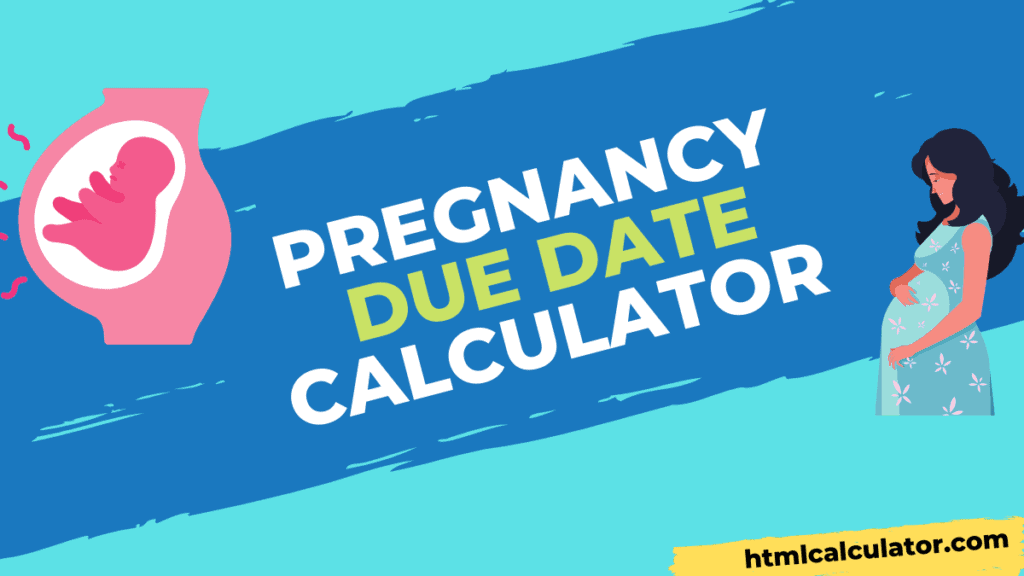
The pregnancy due date calculator is based on the concept that generally the pregnancies last around 38 weeks from conception. Further, the calculator provides week by week position during pregnancy. This pregnancy due date calculator will provide a rough idea of when your baby should be born. If you know the date of the first day of your last menstrual period (LMP), or have already had your first ultrasound scan, you can use this calculator.
Pregnancy Due Date Calculator
Pregnancy Due Date Timeline
This pregnancy calculator also provides week by week changes or events that occur to a pregnant woman. Following chart explains
| Week | Position |
| By 4th | Missed period and time of wonder. Stay active, eat healthy, and resist drinking alcohol. |
| By 8th | Heartbeat is easily detectable via ultrasound. Baby develops this 4 weeks from the size of a sesame seed to a kidney bean. |
| By 12th | This week ends your first trimester. Coming weeks will bring relief for morning sickness and bladder pressure. |
| By 16th | Legs and arms begin to develop rapidly in the next 4 weeks. Baby will begin to suck and blink eyes. |
| By 20th | Week 20 marks the halfway point in your pregnancy. Your now 10 ounce baby will begin to poke and kick. |
| By 24th | You’re already nearing the end of your 2nd trimester which will be at 27 weeks. Ultrasound will reveal sex. |
| By 28th | Your baby has reached the premature threshold where delivery can be survivable. Baby begins to breathe. |
| By 32th | During this period the baby will reach half of their eventual birth weight. Hair and toenails will come in. |
| By 36th | Baby is practicing breathing motions. Braxton Hicks contractions will increase in frequency. Pack hospital bag. |
| By 37th | This week your baby reaches full term. By this time everything should be ready for baby to arrive. |
| By 38th | Congratulations! This week you are due to deliver. |
| By 39th | If you haven’t delivered you will soon. It’s not uncommon to carry into the 39th week. Welcome home Baby! |
Pregnancy Due Date Chart
Here is a table of pregnancy due dates based on the first day of the woman’s last menstrual period (LMP):
| LMP Start Date | Due Date (40 weeks) |
|---|---|
| January 1 | October 8 |
| January 5 | October 12 |
| January 10 | October 17 |
| January 15 | October 22 |
| January 20 | October 27 |
| January 25 | November 1 |
| January 30 | November 6 |
| February 4 | November 11 |
| February 9 | November 16 |
| February 14 | November 21 |
| February 19 | November 26 |
| February 24 | December 1 |
| March 1 | December 6 |
| March 6 | December 11 |
| March 11 | December 16 |
| March 16 | December 21 |
| March 21 | December 26 |
| March 26 | December 31 |
| March 31 | January 5 |
| April 5 | January 10 |
Note that this table assumes a 40-week gestation period, which is the standard length of a full-term pregnancy. However, it’s important to keep in mind that due dates are estimates and that only about 5% of women actually deliver on their due date. Additionally, due dates can be affected by various factors, such as irregular menstrual cycles and variations in fetal growth, so it’s always a good idea to discuss any concerns or questions with a healthcare provider.
Have you checked our other health calculators.